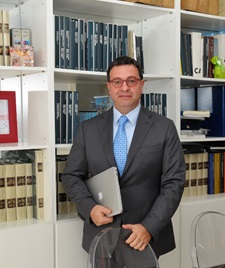PRIN 2020
Opportunities and challenges of nanotechnology in advanced and green construction materials
The recent researches on nanomaterials and nanotechnologies have highlighted the potential use of
nanomaterials in various fields. The construction sector can be a major beneficiary, with
applications that can improve either the characteristics of building elements (when used on
their surface) or the characteristics of conventional or advanced construction materials (when
added to their matrices). We speak of nanotechnology for structures in the first case, whereas
we speak of nanotechnology for construction materials in the second case. Nanoengineering
applied to construction materials makes it possible to respond both to the growing demand for
enhancing construction materials (with satisfactory performances and delayed degradation) and to
the demand for energy savings (a high percentage of energy is consumed by commercial warehouses
and residential buildings). However, the use of nanomaterials in constructions is currently
reduced, mainly for the following reasons: limited knowledge on nanomaterials suitable for
constructions and their behavior, lack of specific standards for design and execution of
construction elements using nanomaterials, reduced market supply of nanoproducts, high costs,
unknown health risks associated with nanomaterials, and poor recyclability of nanomaterials at
the end of their lives.
In order to be able to use nanomaterials in the construction industry on a large scale, it is
therefore necessary that research is carried out according to the following steps:
(1) choice of nanomaterials of potential use in constructions, and study of their
characteristics;
(2) study of the behavior of building elements that contain nanomaterials (that is, building
elements made of nanocomposites) under different types of loading;
(3) development of specific design and construction standards.
As a matter of fact, a literature search indicates that the available information is incomplete.
Therefore, the main goal of the present project is to develop steps (1) and (2) in depth, both
to overcome the lack of knowledge and to propose, in the context of step (3), predictive
formulas to be implemented into the construction national standards.

Luciano Feo is Full Professor of Structural Mechanics in the Department of Civil Engineering (Diciv) at the University of Salerno (UNISA, Italy)
Read more
Francesco Fabbrocino is Full Professor of Structural Engineering in the Department of Engineering at the Pegaso Telematic University (Unipegaso, Italy).
Read more
Paolo Lonetti is Associate Professor of Structural Mechanics in the Department of Civil Engineering (DINCI) at the University of Calabria (UNICAL, Italy).
Read more
Luca Lanzoni is Associate Professor of Solid and Structural Mechanics in the DIEF - Department of Engineering “Enzo Ferrari” at the University of Modena and Reggio Emilia (UNIMORE, Italy) and Head of the “CRICT”
Read more
Sabrina Vantadori is Professor in Structural Mechanics at the Department of Engineering and Architecture of the University of Parma. She is the TC3 President (Technical Committee No.3 “Fatigue of Engineering Materials and Structures”)
Read more